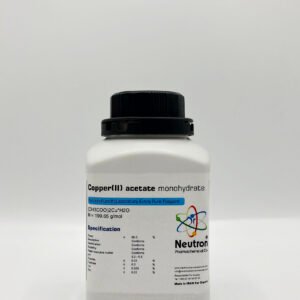Sodium dihydrogen phosphate
| Formula | H2NaO4P |
| Chemical formula | NaH2PO4 |
| Molar mass | 119.98 g/mol |
| Bulk density | ~940 kg/m3 |
| CAS number | 7558 – 80 – 7 |
| HS Code | 28352200 |
| EC number | 231-449-2 |
| Storage | Without limitation |
| SDS | available |
| Odour | Odourless |
| Form | crystals |
| Color | Colourless |
| pH value | 4.5 (10 g/l 25°C) |
| Solubility | 850 g/l (20°C) |
| Thermal decomposition | >170°C |
| Assay | 98.0 – 103.0 | % | |
| Solubility | Conforms | ||
| Description | Conforms | ||
| Identification | Conforms | ||
| pH | 4.1 – 4.5 | ||
| Water | ≤ | 2 | % |
| Insoluble substances | ≤ | 0/2 | % |
| Chloride | ≤ | 0/014 | % |
| Sulphate | ≤ | 0/15 | % |
| Al , Ca and Related elements | Conforms | ||
| Heavy metals | ≤ | 0/002 | % |
Sodium dihydrogen phosphate is a white, crystalline inorganic compound commonly used in food, pharmaceuticals, and laboratory buffer systems. It is the monosodium salt of phosphoric acid and acts as a weak acid in aqueous solutions.
🏭⚗️ Production
Sodium dihydrogen phosphate is produced by the neutralization of phosphoric acid (H₃PO₄) with a stoichiometric amount of sodium hydroxide (NaOH) or sodium carbonate (Na₂CO₃), followed by crystallization of the resulting solution. It is often obtained in its monohydrate or anhydrous forms.
🔬 Properties
Sodium dihydrogen phosphate has the chemical formula NaH₂PO₄ and a molar mass of approximately 119.98 g/mol (anhydrous form). It is a water-soluble, odorless, white crystalline powder that exhibits acidic behavior in solution. It acts as a pH buffer, particularly in combination with disodium phosphate, and is thermally stable under normal conditions.
🧪 Applications
Sodium dihydrogen phosphate is widely used in the preparation of phosphate buffer solutions for biological and chemical experiments. It is also employed as a food additive (E339) for controlling acidity and as a leavening agent. In medicine, it is used as a laxative and in certain electrolyte replacement therapies. Industrially, it is used in water treatment and detergent formulations.
⚠️ Safety
Sodium dihydrogen phosphate is generally regarded as safe for use in food and pharmaceutical products at appropriate concentrations. However, direct contact may cause mild irritation to the eyes or skin. It should be handled using standard laboratory precautions and stored in a sealed container away from moisture and incompatible substances such as strong bases.





